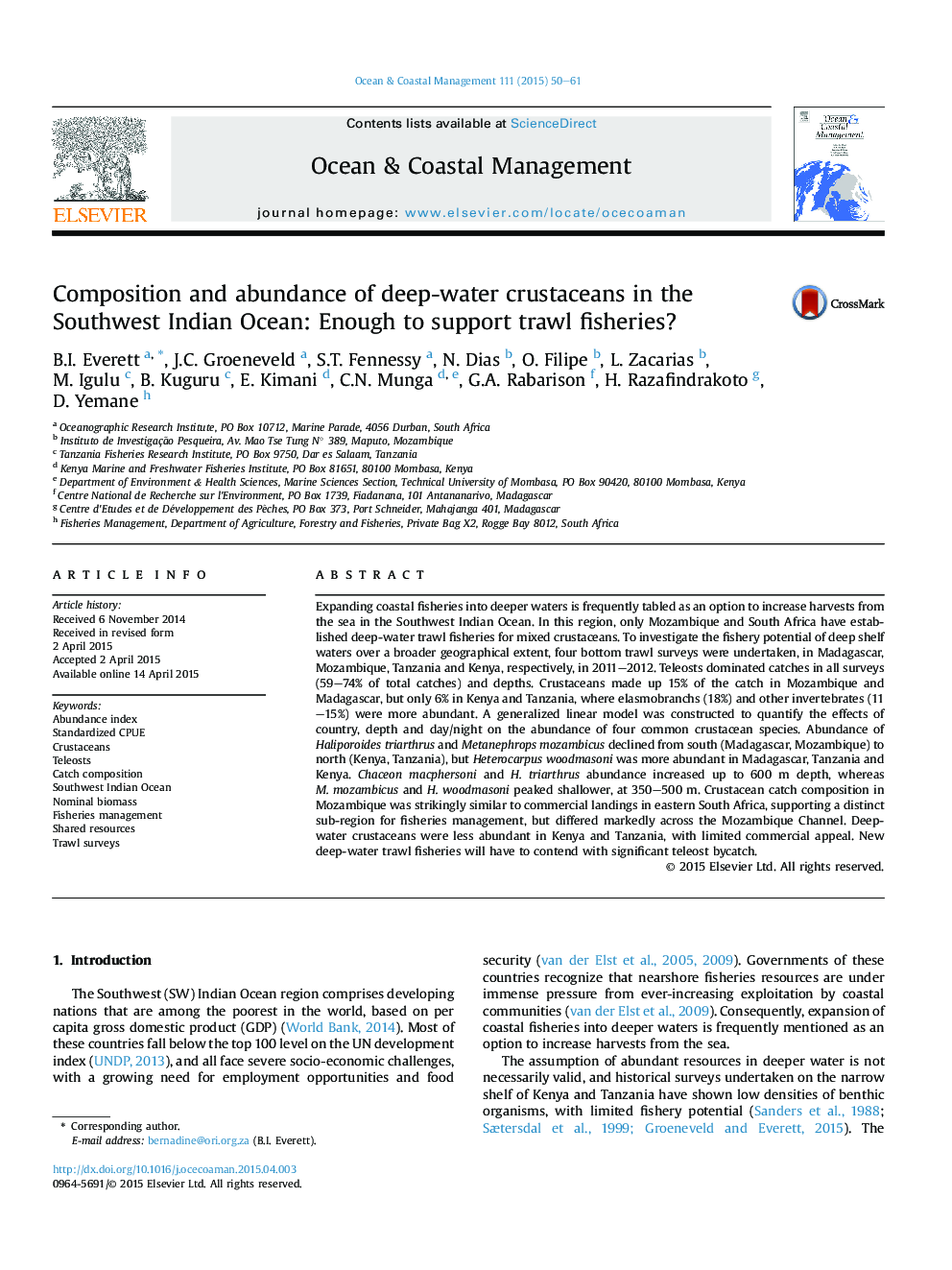| کد مقاله | کد نشریه | سال انتشار | مقاله انگلیسی | نسخه تمام متن |
|---|---|---|---|---|
| 1723471 | 1520517 | 2015 | 12 صفحه PDF | دانلود رایگان |
• Teleosts dominated catches in all surveys, followed by crustaceans.
• Crustacean catch composition differed markedly across the Mozambique Channel.
• South to north gradient in abundance of key commercial crustaceans.
• Similar crustacean composition in Mozambique and South Africa suggests a distinct sub-region for fisheries management.
• Expansion of crustacean trawl fisheries into deeper water does not appear to be a viable option in the SW Indian Ocean at present.
Expanding coastal fisheries into deeper waters is frequently tabled as an option to increase harvests from the sea in the Southwest Indian Ocean. In this region, only Mozambique and South Africa have established deep-water trawl fisheries for mixed crustaceans. To investigate the fishery potential of deep shelf waters over a broader geographical extent, four bottom trawl surveys were undertaken, in Madagascar, Mozambique, Tanzania and Kenya, respectively, in 2011–2012. Teleosts dominated catches in all surveys (59–74% of total catches) and depths. Crustaceans made up 15% of the catch in Mozambique and Madagascar, but only 6% in Kenya and Tanzania, where elasmobranchs (18%) and other invertebrates (11–15%) were more abundant. A generalized linear model was constructed to quantify the effects of country, depth and day/night on the abundance of four common crustacean species. Abundance of Haliporoides triarthrus and Metanephrops mozambicus declined from south (Madagascar, Mozambique) to north (Kenya, Tanzania), but Heterocarpus woodmasoni was more abundant in Madagascar, Tanzania and Kenya. Chaceon macphersoni and H. triarthrus abundance increased up to 600 m depth, whereas M. mozambicus and H. woodmasoni peaked shallower, at 350–500 m. Crustacean catch composition in Mozambique was strikingly similar to commercial landings in eastern South Africa, supporting a distinct sub-region for fisheries management, but differed markedly across the Mozambique Channel. Deep-water crustaceans were less abundant in Kenya and Tanzania, with limited commercial appeal. New deep-water trawl fisheries will have to contend with significant teleost bycatch.
Journal: Ocean & Coastal Management - Volume 111, July 2015, Pages 50–61
